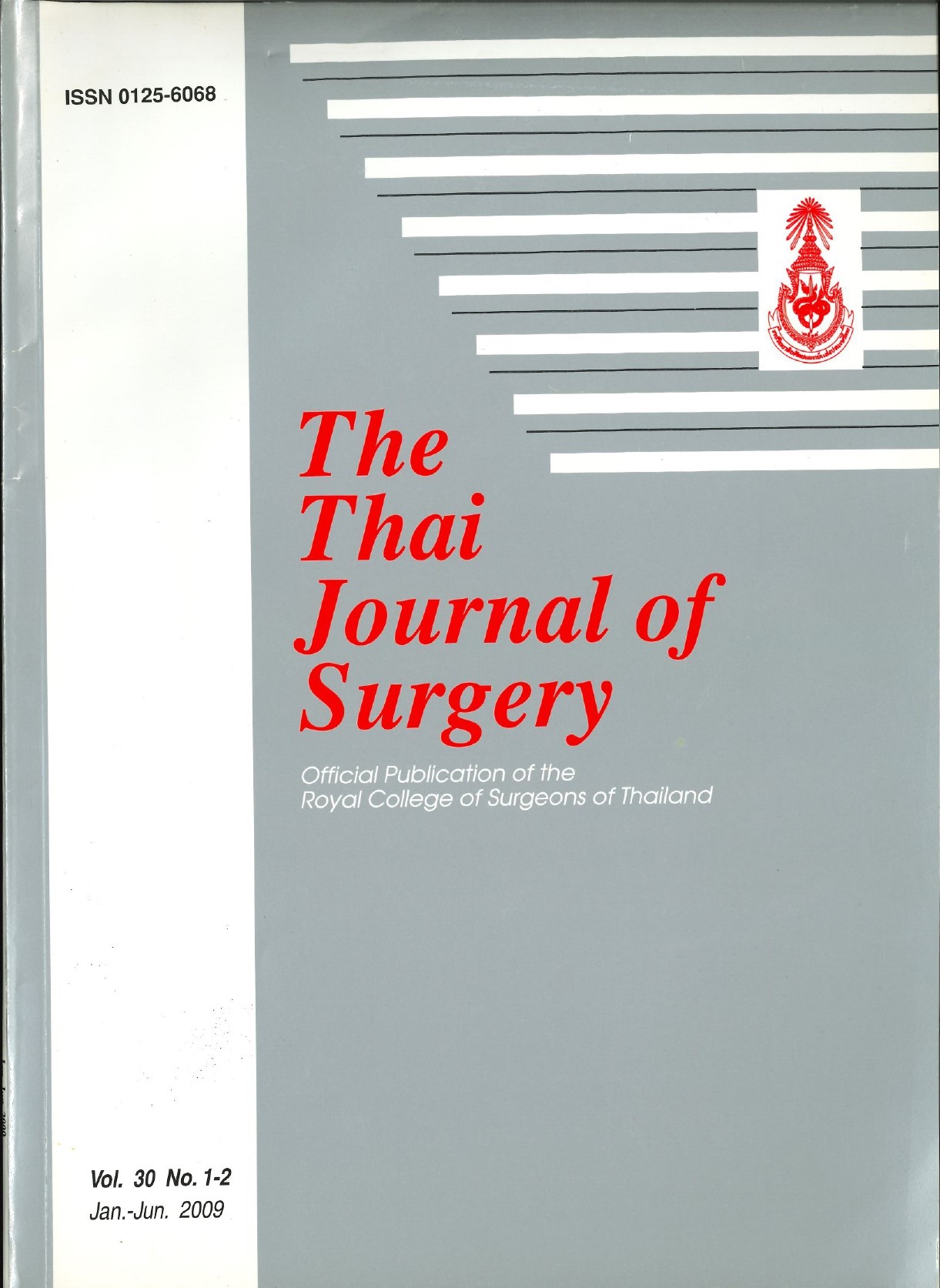Delayed Pericardial Effusion Following Heart Valve Surgery: Aspect of Pleuropericardial Window for Prevention
Keywords:
cardiac tamponade, pericardial effusion, pleuropericardial window, heart valve surgeryAbstract
Background: Delayed pericardial effusion is common after open heart surgery for valvular heartdiseases. In particular, cases with cardiac tamponade are associated with significant morbidity and mortality.
Objectives: The purpose of this study was to investigate whether intra-operative pleuropericardial
window of the right pleural cavity could prevent delayed pericardial effusion in patients undergoing conventional
valve surgery.
Methods: A retrospective analysis of 205 consecutive patients undergoing valve surgery and survived
during August 2006 to February 2007 at our institution was performed. The patients were divided into two
groups: group I consisted of 105 patients who underwent conventional valve surgery alone and group II
consisted of 100 patients who underwent conventional valve surgery plus intra-operative pleuropericardial
window of the right pleural cavity for prevention of delayed pericardial effusion. Patients with clinical suspicion
of delayed pericardial effusion were evaluated by transthoracic or transesophageal echocardiography in the
first to tenth postoperative week. Other clinical parameters were also analyzed. Differences between groups
were demonstrated using the two-sample test of proportion (Z-test) for statistical analysis.
Results: Delayed pericardial effusion was significantly more common in patients undergoing conventional
valve surgery alone, as compared to conventional valve surgery plus intra-operative pleuropericardial window
(11 patients versus 3 patients, p <0.05).
Conclusions: Delayed pericardial effusion was more common in patients undergoing conventional valve
surgery alone, as opposed to conventional valve surgery plus intra-operative pleuropericardial window of the
right pleural cavity. Thus the intra-operative pleuropericardial window should be performed as an additional
procedure for prevention of delayed pericardial effusion following valve surgery.
References
for delayed tamponade after cardiac valve
operation. Ann Thorac Surg 2002;73:1479-83.
2. Kouchoukos NT, Blackstone EH, Doty DB, Hanley FL, Karp RB.
Cardiac Surgery. 3rd ed. Elsevier Science. USA, 2003.
3. Tomic S, Jovovic L, Zlatanovic M, Trkulja L, Trajic S, Tomovic M,
Djukanovic B. The influence of anticoagulant therapy in the
evolution of large pericardial effusions after cardiosurgery.
Eur J Echocardiogr 2005;6:S74.
4. Palacious IF. Pericardial effusion and tamponade. Curr Treat
Options Cardiovasc Med 1999; 1: 79-89.
5. Fowler NO. Cardiac tamponade: a clinical or an echocardiographic
diagnosis? Circulation 1993;87:1738-41.
6. Reddy PS. Cardiac tamponade: disease of the pericardium.
Cardiol Clin 1990;8:627-37.
7. Spodick DH. Pathophysiology of cardiac tamponade. Chest
1998;113:1372-8.
8. Zocchi L. Physiology and pathophysiology of pleural fluid
turnover. Eur Respir J 2002;20:1545-58.
9. Miserocchi G. Physiology and pathophysiology of pleural
fluid turnover. Eur Respir J 1997;10:219-25.
Downloads
Published
How to Cite
Issue
Section
License
Articles must be contributed solely to The Thai Journal of Surgery and when published become the property of the Royal College of Surgeons of Thailand. The Royal College of Surgeons of Thailand reserves copyright on all published materials and such materials may not be reproduced in any form without the written permission.



